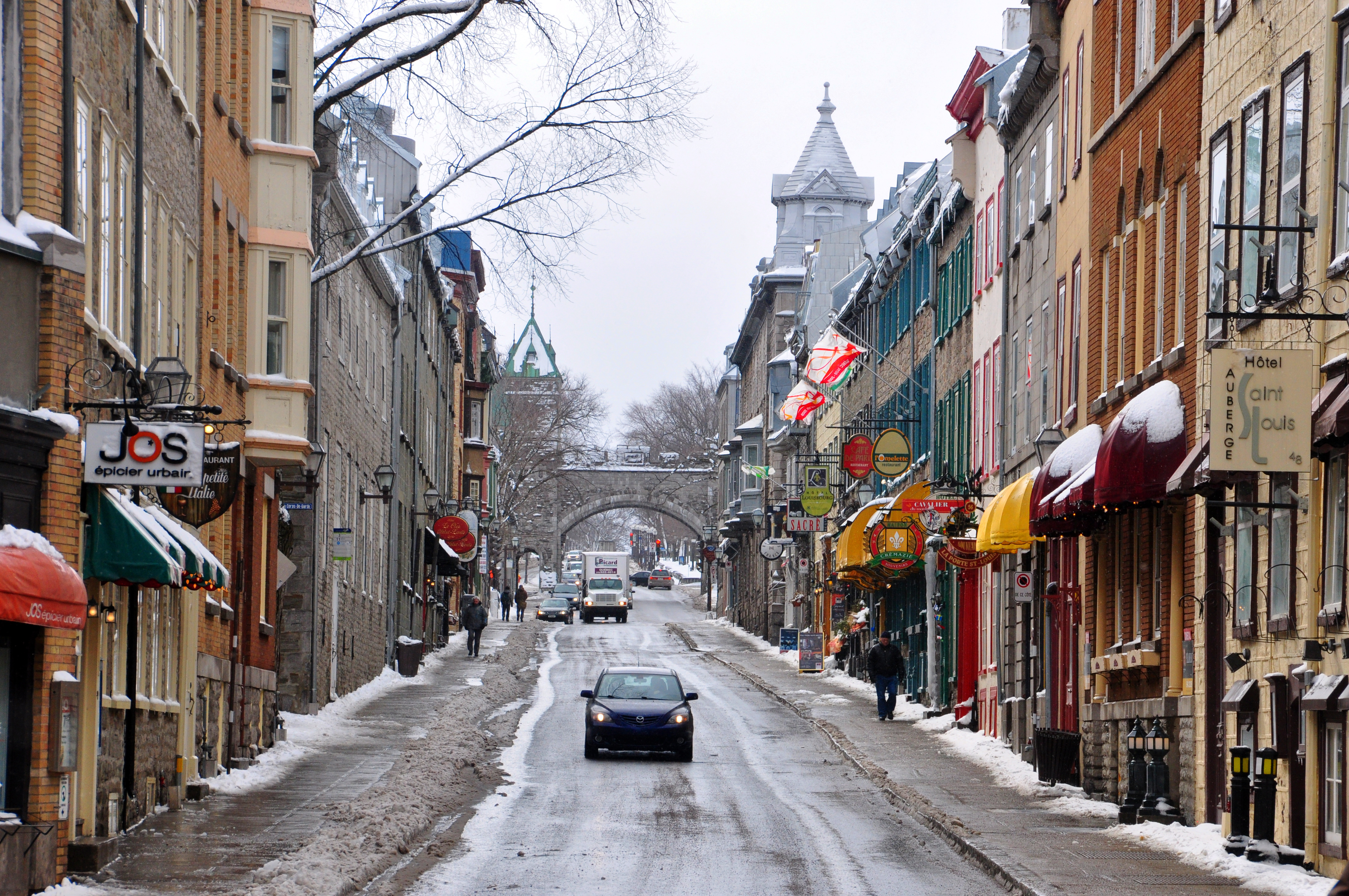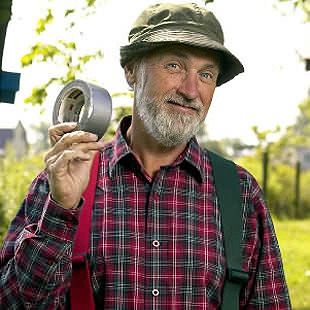During
the summer of 2003, I was working in northern Minnesota at Concordia Language
Villages. Two others from my camp (Japanese camp) decided to meet up with two
girls from the French camp – friends of my coworker – and head up into Canada
on our time off. We were roughly a four-to-five-hour drive from the city of
Winnipeg, Manitoba. I happened to have my passport on me since I was getting
ready to go to Brazil after camp ended. I learned a lot in just the day I spent
in Canada. First of all, border guards don’t find their questions ridiculous,
as we did. (We handed him three passports for each of us – one from Florida,
from Indiana, and Illinois – and he said “You drove from Florida just to stay
for a day!?” His second question was whether we had more than $10,000 on us –
we laughed because our camp is known for paying us more in experience than
monetarily. But he let us through. I guess he hadn’t hit his quota of loud,
obnoxious Americans for the day, but it was still morning, though. At least
none of us were wearing fanny packs. We were supposed to be going to some
Winnie the Pooh festival that one of the girls from the French camp wanted to
go to, but when she saw there were a million parents and five million kids, she
decided it probably wasn’t the ideal place for someone who was claustrophobic
(maybe should’ve thought of that sooner, Sherlock). But regardless, we found
some bar and grill with an outdoor patio – even though it was a sweltering 90
degrees; I thought Canada was supposed to be cooler? Since crowds were somehow out, we managed to find a mall
downtown with an IMAX theatre and hung out there, watched a movie, bought some shot
glasses with maple leafs on them – you know, highly important things. On the
way back, we found this French bakery and loaded up on some good bread, except
as we neared the border again, we remembered we couldn’t take food back into
the States. The three of us were shoving croissants and mini baguettes down our
throats so that it would make the guy who wins the hot dog eating contest every
year sit back and take notes. And that’s my one-day impression of Canada. (So
far.)
Canada
and the US share the longest land border (5525 miles!), and it’s also the
largest country to only border one country. Minnesota may be the land of 10,000
lakes, but Canada has between two million and three million lakes of all sizes –
more than all the other countries combined. (I’ve always said Minnesota is
actually southern Canada. Like Gary, Indiana is actually part of Chicago. True
story.) Because of the vast frozen tundra of the north, ninety percent of the
population lives within 160 km (about 100 mi) of the US-Canada border. And the
other ten percent must be tougher than nails.
Canada
has two official languages: English and French (especially spoken in the
province of Quebec). This is the result of the land grab wars between the
British and the French from the 1600s all the way through the late 1800s.
Canada officially gained independence from Britain in 1867 and is part of the
Commonwealth nations, which is governed by Queen Elizabeth II of England. However,
they do have their own prime minister who handles pretty much all of the
business, Stephen Harper. The multicultural and diverse environment celebrated
in Canada is exuded in their music, arts, and cuisine. Religion is also fairly
diverse; the majority following Christianity (of which more people consider
themselves Catholic than Protestant), followed by over 16% of the people not
declaring any particular religion, and a little over 6% are non-Christian
(Jewish, Islamic, Buddhist, etc.)
The
northern part of the country – the Arctic (I’ve often thought Santa
Claus was a Canadian) – is covered in ice and permafrost. Natural glaciers that
have been around since the last ice age are there permanently (hopefully, if we
don’t mess it up). Canada also has several mountain ranges with several active
volcanoes, which are linked to and the cause of a lot of seismic activity as
well. The St. Lawrence River leading through the Great Lakes was once thought
to be part of the Northwest Passage – the first explorers’ hopeful link from
the Atlantic Ocean to the Pacific Ocean. Later they figured out you could cross
through the Arctic (there’s a dispute over this: Canada declares that others
need to ask permission before passing through; others think that it’s
international waters and don’t need to ask. It sounds like my kids.)
Canada’s
capital is probably one that is missed by many Americans: Ottawa. Granted,
Toronto, Montreal, and Vancouver are more populated than Ottawa is. Queen
Victoria chose Ottawa as the capital mainly for two reasons: that the backwoods
which surrounded it at the time was a natural barrier, and that it was halfway
between Toronto and Quebec City. She also thought a smaller city would help
resist against adverse political movements. Toronto lies on Lake Ontario and is
highly multicultural with a lot of artistic features and sporting events (and
happens to be the sister-city with Chicago). Montreal is the capital of Quebec, and a large
part of the city proper lies on an island. More than 2/3 of the people speak
French, and there are many large corporations whose headquarters are in either
Toronto or Montreal. Vancouver is one of the larger cities on the west coast –
most of the major cities are centered in the eastern sections of the country.
It’s home to the 2010 Winter Olympics and the one of the largest film
industries in North America (some call it Hollywood North). It also tends to be a little more temperate climate-wise than the rest of Canada.
Canada
is a highly developed country: 99% of the people are literature, have adequate
healthcare and access to medications and doctors; almost 100% have access to
clean water and sanitation. The 2012 figures on unemployment put it around
7.3%, while the US was listed at 8.2% (even though I think the figure that just
came out this past week was that we were down to around 7.7%). Canada is also one of the starting
points for certain drugs to enter the US, like weed and ecstasy. Besides it’s music and movie sets,
Canada has a HUGE interest in hockey as well as other winter sports. It was the
host of the two Winter Olympics (Calgary in 1988, Vancouver in 2010), as well
as hosting one Summer Olympics (Montreal in 1976).
I’ve
worked with three Canadians in my lifetime, and weirdly enough they were all
from British Columbia. (One of them told me one time that British Columbia had
once thought of leaving Canada and joining the US – I don’t know if that’s true
at all or not, but another friend of mine and I starting thinking up names for
what we could call it this new “state.” We tentatively came up with North Pacifica,
but then Chrysler came out with a crossover called the Pacifica, so we threw it
out – even though it’s assembly plant was in Windsor, Ontario. Go figure.) Regardless
of this poking-fun-at-each-other-because-we-secretly-like-each-other relationship
we have with Canada, I’m kind of excited about exploring our neighbor to the
north this week. Mostly because I’m pretty sure there’s more to it than moose
and forests and ice and polar bears and hockey and curling and cheap
prescription drugs and loons and lakes and Canadian bacon (which isn’t really
Canadian, nor is Kevin Bacon since I’m mentioning non-Canadian bacons), the Red
Green Show (best show ever!), politeness and other Canadian things that come to
mind, eh.
Up
next: holidays and celebrations







No comments:
Post a Comment